The Google team has been hard at work polishing our favorite blank documents to look at, Google Docs. While some of the changes are merely cosmetic—I mean, look at all those pretty new icons in the menu—others added new functionality. And if, like most humans, you dismiss every notification for a new feature, you might have missed them.
So, whether you're a Google Docs power user or just a casual one (no judgment!), dive into the most recent batch of features, and get a feel for how these Google Docs tips can improve your workflows. (Feel free to jump to a specific feature or keep scrolling to explore every one.)
1. Pageless view
This one's my favorite, so it gets top billing. Instead of working with pages in a document (and dealing with all those page breaks), you get to write on an endless strip of white digital light. It's especially useful if you're working with large images or writing for the web.
To activate pageless view, click File > Page setup. From there, click the Pageless tab, and OK to confirm. You can also click Set to default, so all your future documents are created in pageless mode.
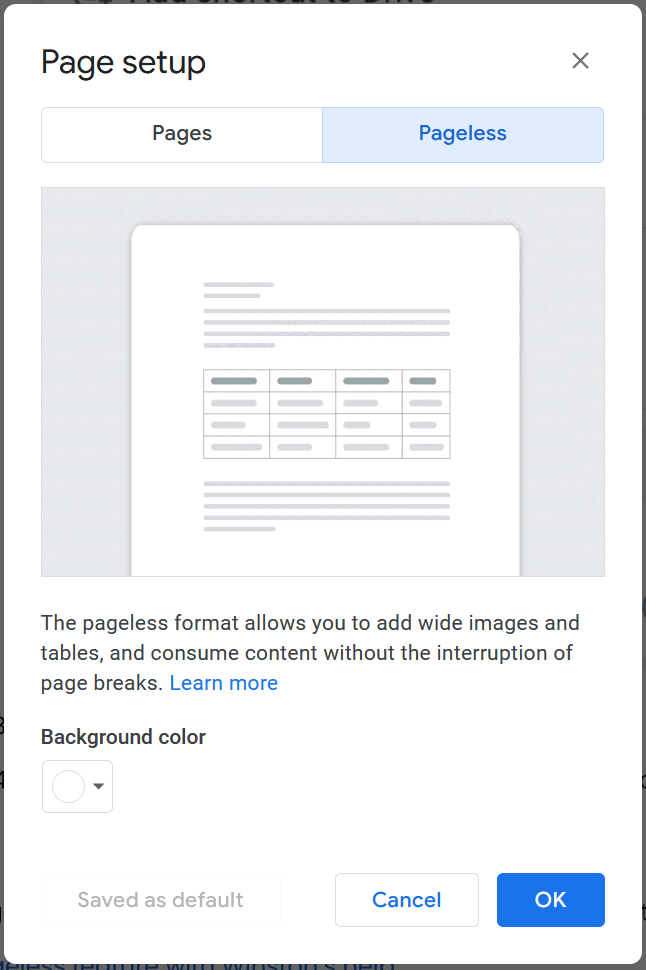
For a more in-depth guide to using the pageless view, check out how to remove page breaks in Google Docs (cute dog pics included).
2. Menu shortcut
Google Docs now has a Notion-like shortcut to let you tag people, add elements, and use a wide range of features without reaching for your mouse. While writing, type @, and a dropdown menu will appear.
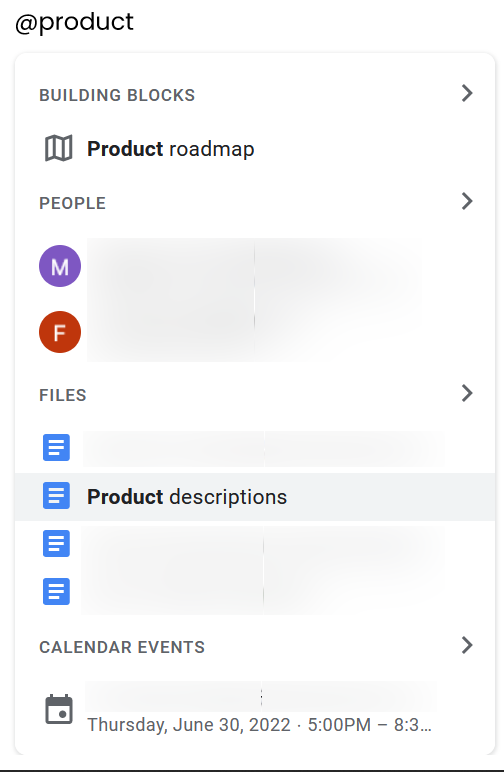
You'll get suggestions for formatting, people, files, and events—so if you use lots of other Google apps, everything will feel a lot more interconnected. Use the arrow keys coupled with your Enter/return key to add any of the items to your document.
Take a look at how you can power up all of your Google apps using automation.
3. Dropdowns
I found this one by accident. I opened the menu shortcut by typing @ and saw an option called Dropdown for a brief instant before filtering the list. (Turns out you can find it either by typing @dropdown or by clicking Insert on the top menu and selecting Dropdown.)

It's a very simple element. You can either place a pre-made dropdown or create your own—and add or remove any options you need.
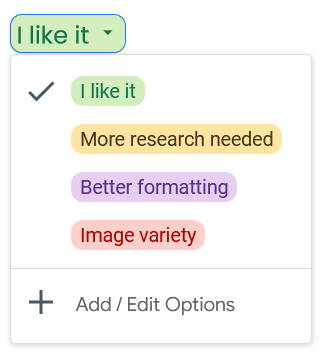
As the pre-made dropdowns hint, these are useful for tracking projects or the review status of document sections.
4. Table templates
Creating a simple table is easy in Google Docs. Choose how many rows and columns you want, and it's good to go. There's something new here, though: Google added some templates.
A product roadmap with four columns: Project, Status, Related files, and Notes.

A review tracker with three columns: Reviewer, Status, and Notes.
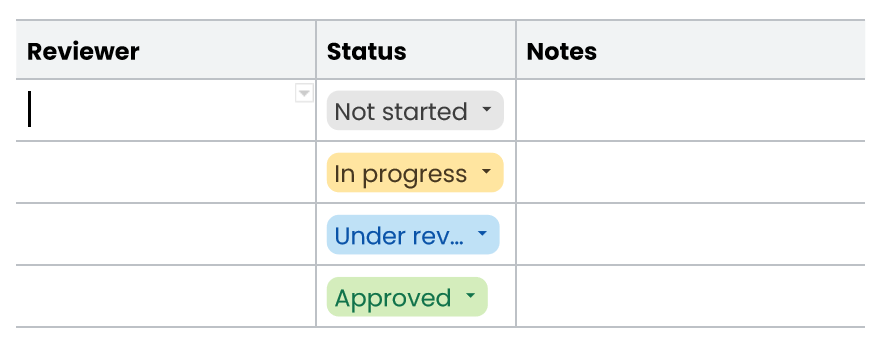
A project assets table with three columns: File, Description, and Status.
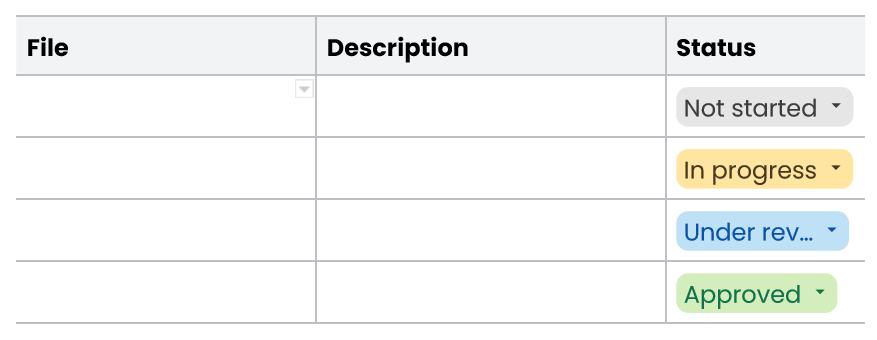
A launch content tracker with six columns: Type, Description, Publish date, Published, Outlet, and Link to content.

While these templates are still a far cry from a fully-fledged project management app, they can help in organizing smaller projects without hopping on a different tab. To add them, click Insert, hover over Building blocks, and pick the template you need.
Learn how you can streamline the process of filling in templates with Google Docs variables.
5. Meeting notes
Another useful building block in Google Docs: Meeting notes. When you place a meeting notes template on your Google Docs, you get to pick an event from your calendar.
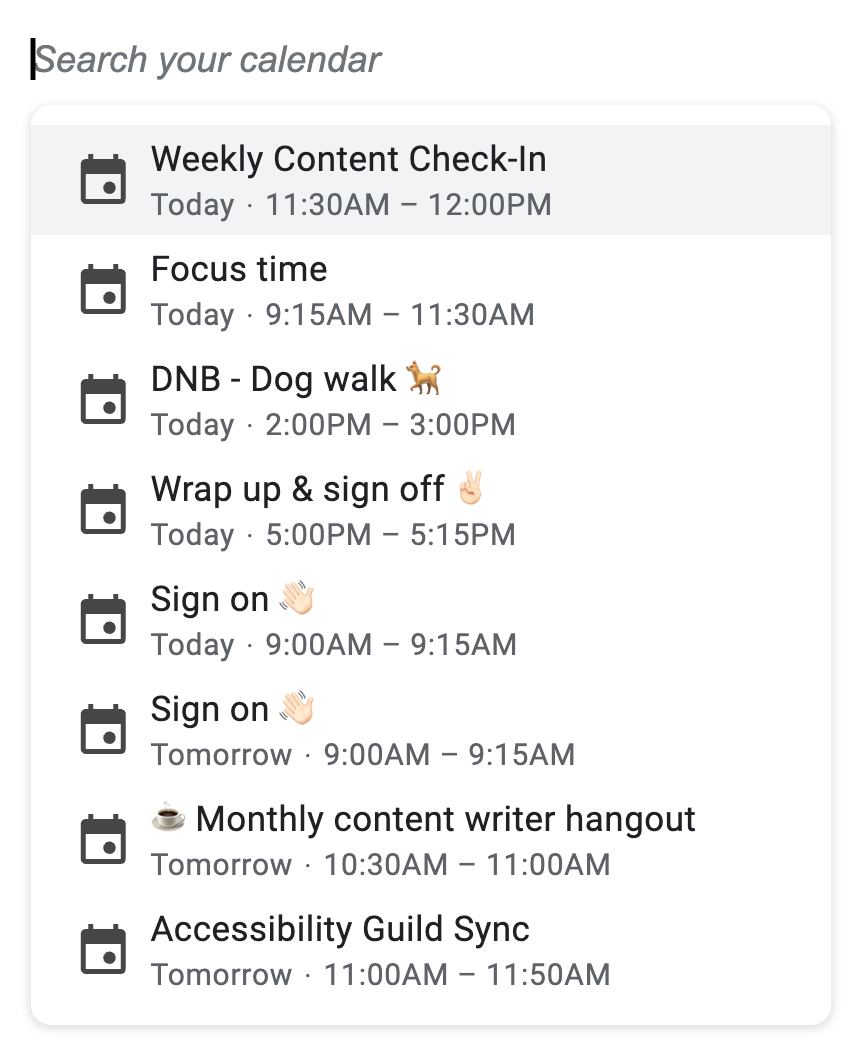
Once you do, a template appears, complete with the meeting date, name, and list of attendees. Use it to jot down meeting notes and add action items. You can even assign action items and email the meeting notes to all attendees via Gmail, directly through the doc.

6. Email draft
You can now compose an email directly within Google Docs and send it via Gmail to your contacts. The amazing part? You can use all Google Docs elements in the email draft body, and they get exported on the message you send. Yes, that means you can place elements like tables, dropdowns, and file links, among others.
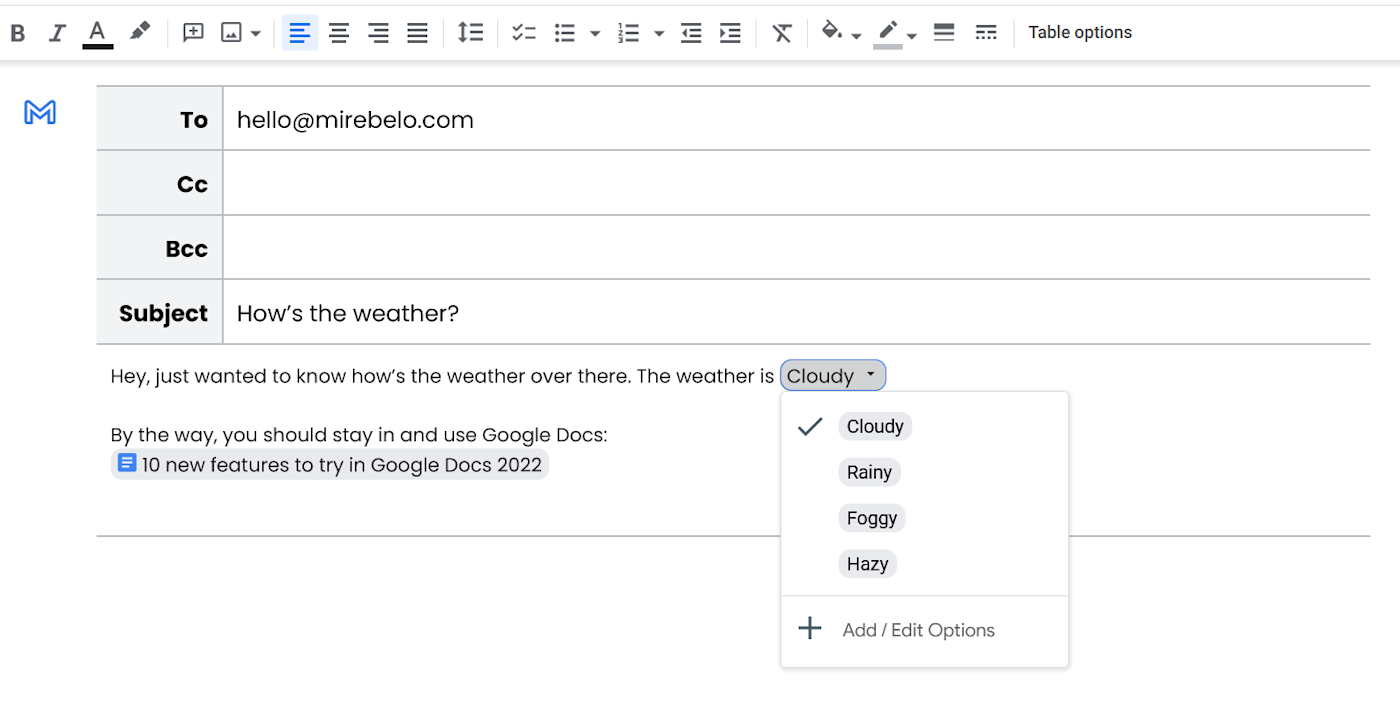
Click on the Insert menu, and hover over Building blocks. Then, select Email draft. Fill in the email fields, and add your own email body. When you're ready to send it, click the Gmail icon to export it. You'll be able to see a preview before sending.
For more details, take a look at this walkthrough of how to email from Google Docs.
7. Checklists
That great feeling of crossing out a task when you complete it? That's now included in Google Docs. I used to color code to keep track of this kind of thing, but now with a clickable checkbox, things are much easier.
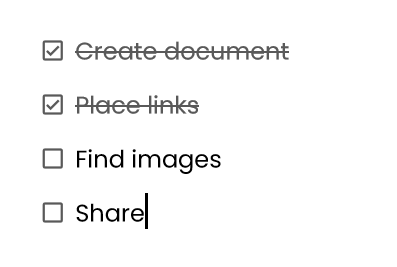
To start creating your own task lists, simply enter open and close square brackets [] and press the spacebar. Google Docs will whip up a fully interactive checkbox. If you prefer going through the menu, you'll find checklists in Format > Bullets & numbering > Checklist.
The checklist icon is also in the bullets and numbering section on the toolbar.

8. Document summary
If you love using the outline feature in Google Docs, you'll probably also like the new summary feature. When you expand the outline on the left side of the screen, there's an option to add a document summary.
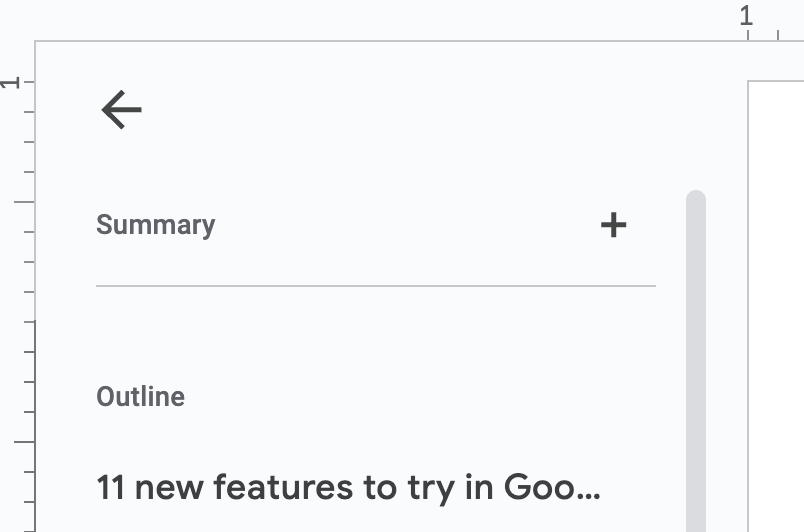
By default, when you click Add summary, Google Docs will use AI to generate a brief summary for you. If you keep your subheadings clear, it does a pretty decent job. But if you prefer to write your own, enter something short and clear in the Summary text box.
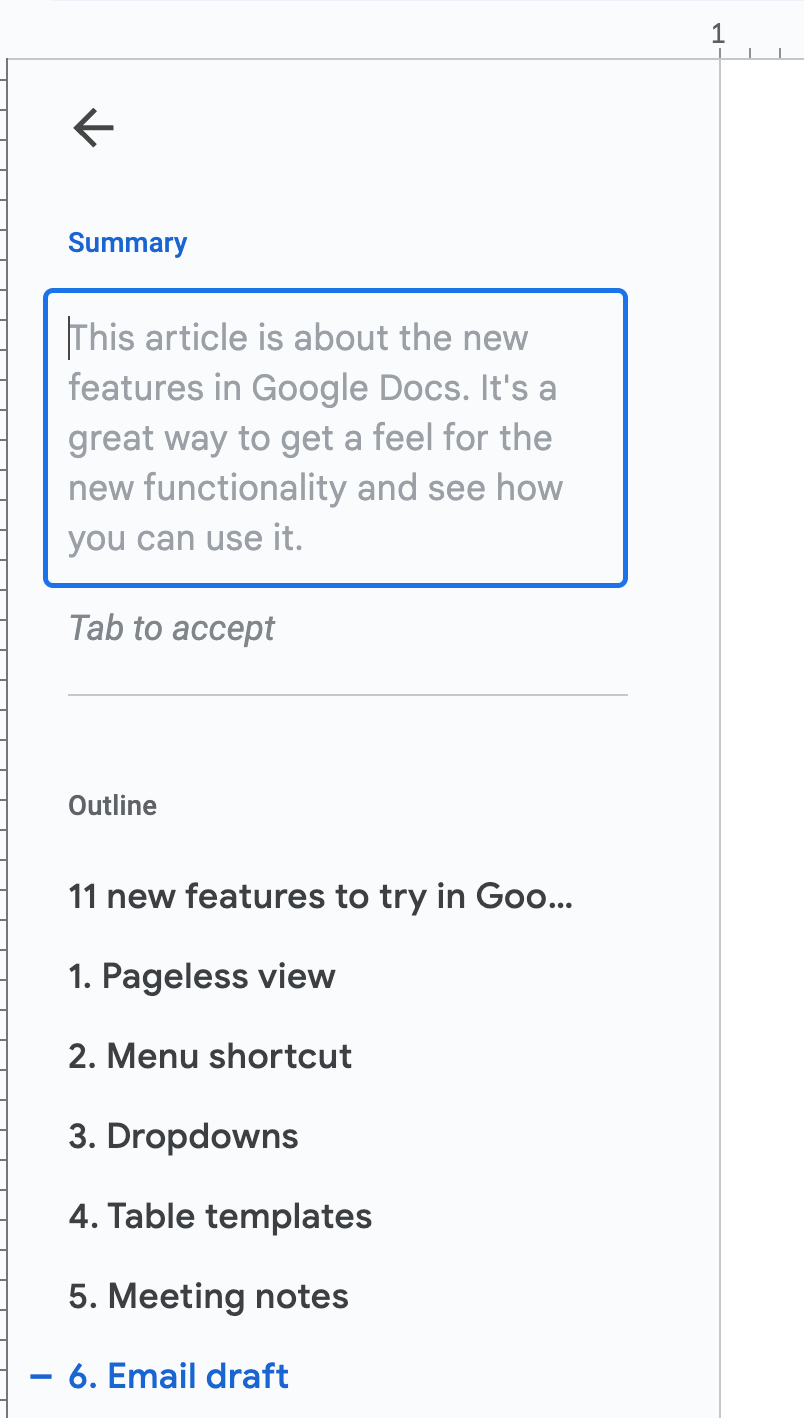
If you keep your subheadings clear, adding a summary can give a quick and effective overview of what the reader can expect. Simply click the + sign, and write something short and clear.
9. Watermarks
Sometimes you want to drop a hint to let your readers know that they're looking at important information. Or that this is your work and it isn't meant to be reproduced without consent. Or maybe you just want to put your brand in high relief. Whatever your objective is with watermarking a document, Google Docs now supports both text and image watermarks.
To begin, make sure your document isn't set to pageless. Then click Insert > Watermark. You can upload an image or write the text you'd like to use as a watermark. Simple.

10. Emoji reactions
If a picture is worth a thousand words, what about a well-executed smirk? Now that Google Docs supports emoji reactions, we're much closer to finding out.
To react to anything inside Google Docs, highlight the text that's making you feel something, and click the smiling face between the comment and edit buttons.

Then pick the emoji that expresses your feelings accurately.
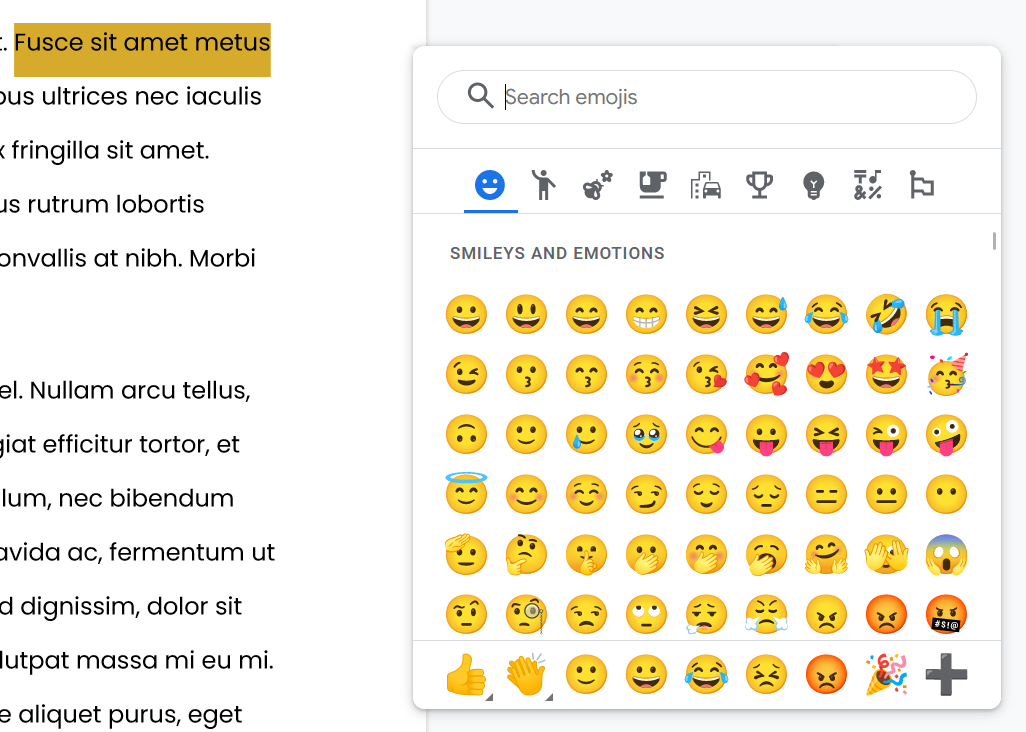
Want to place some emoji on the document itself? You can do that too. Type a colon : to bring up the list of emojis. If you know the name of the emoji you want to use, enter it immediately after the colon. Otherwise, you can browse through the available options.
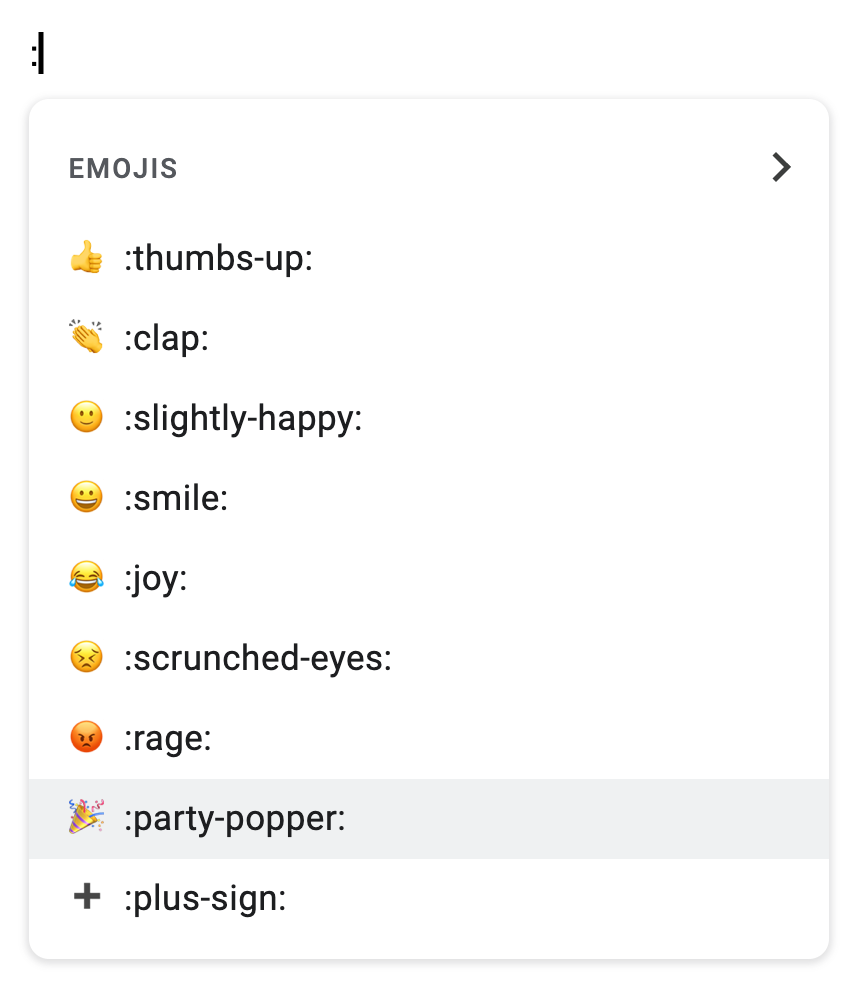
Helpful advice: don't use vegetables or fruits, and avoid punching people in the face.
11. Google Meet integration
That trope that writers are lonely people is a thing of the past. Google Docs now lets you join or create a meeting without your document ever leaving your sight. First, make sure you're using Chrome (other browsers don't support this feature), then click the Meet button at the top right. Start a new meeting or enter a meeting code, and you're good to go.

It's particularly useful when you want to present the content of your document to others since you can screen share the Doc. These features are also available in Sheets and Slides, so the more analytical and artistic among you can make your work public.
12. Chat in Google Docs
Prefer to review a document with others without hopping into a meeting? You can live chat with them using Google Docs' chat feature (this feature isn't available if you're the only one with the file open).
To chat, click the Show chat icon at the top right, and type your message in the message box.
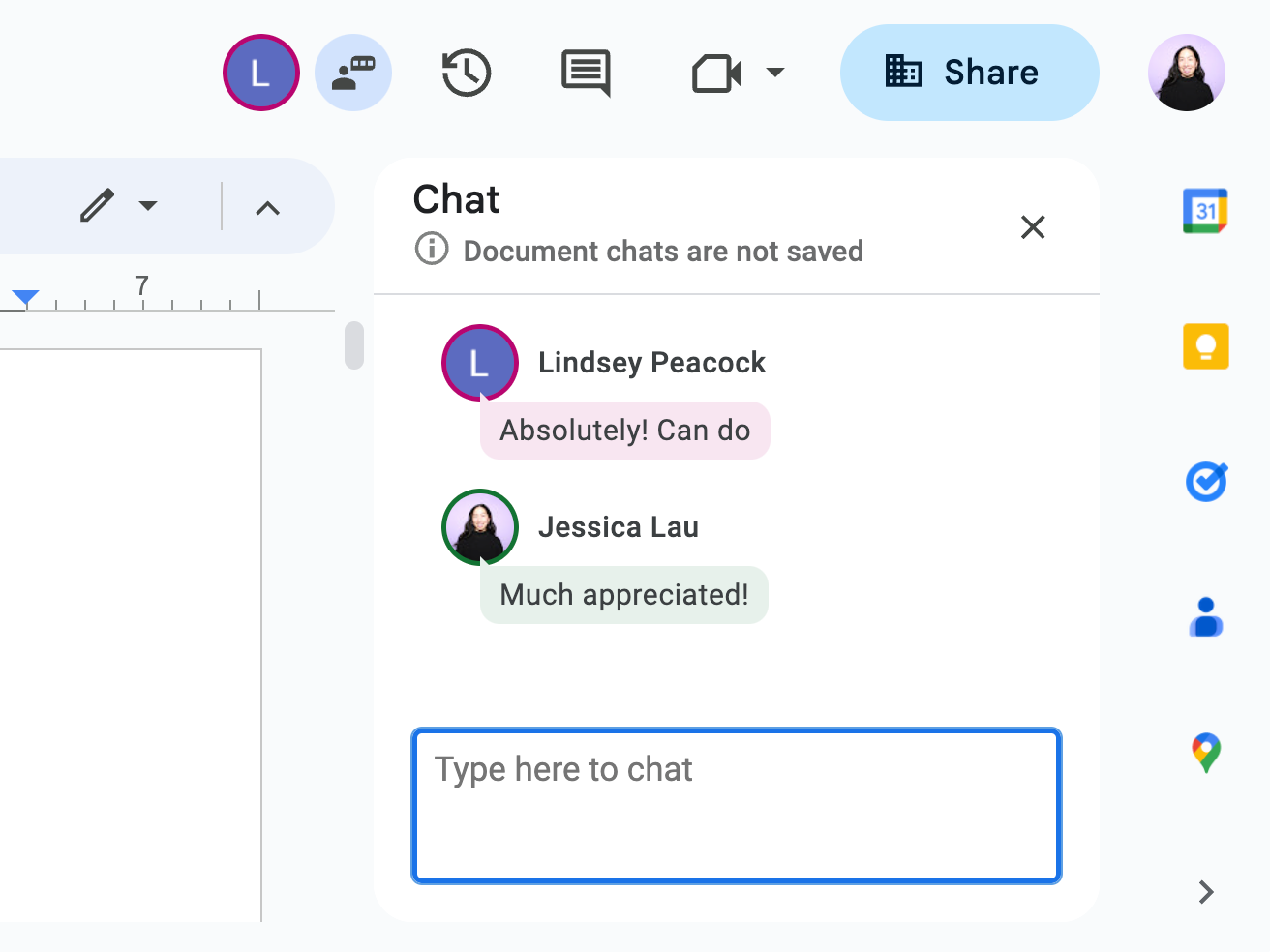
Note: Document chats aren't saved. This means if you exit the doc or refresh the page, your chat history will disappear forever.
13. Set an expiration date for file access
Have you ever asked reviewers to leave any feedback by a certain date, only to get notifications of new comments well after the due date? If you have a Google Workspace account, you can prevent this by adding an expiration date for file access.
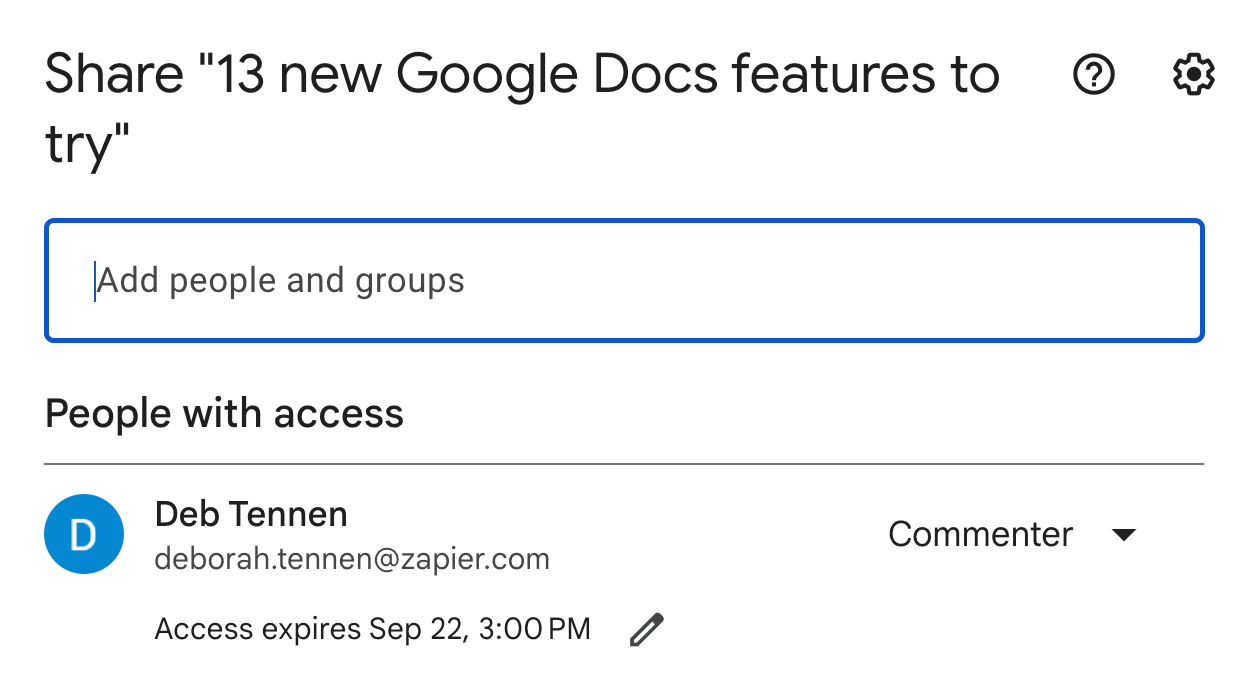
Click the role dropdown next to the reviewer's name. Then click Add expiration. By default, Google Docs will set the expiration date to 30 days after the file has been shared. To modify this, click the Edit expiration icon, which looks like a pencil, next to the file access expiration date.
Note: You can't apply expiration dates to multiple reviewers at once.
New tools, new horizons
All these features in Google Docs were implemented relatively recently (some of them more discreetly than others). After a series of happy accidents, I found most of them in the wild—a bit like productivity-enhancing Pokémon hiding in the wilderness. Keep your eye out for new ones that pop up. I know I will.
Related reading:
This article was originally published in August 2022. The most recent update was in September 2023 with contributions from Jessica Lau.




